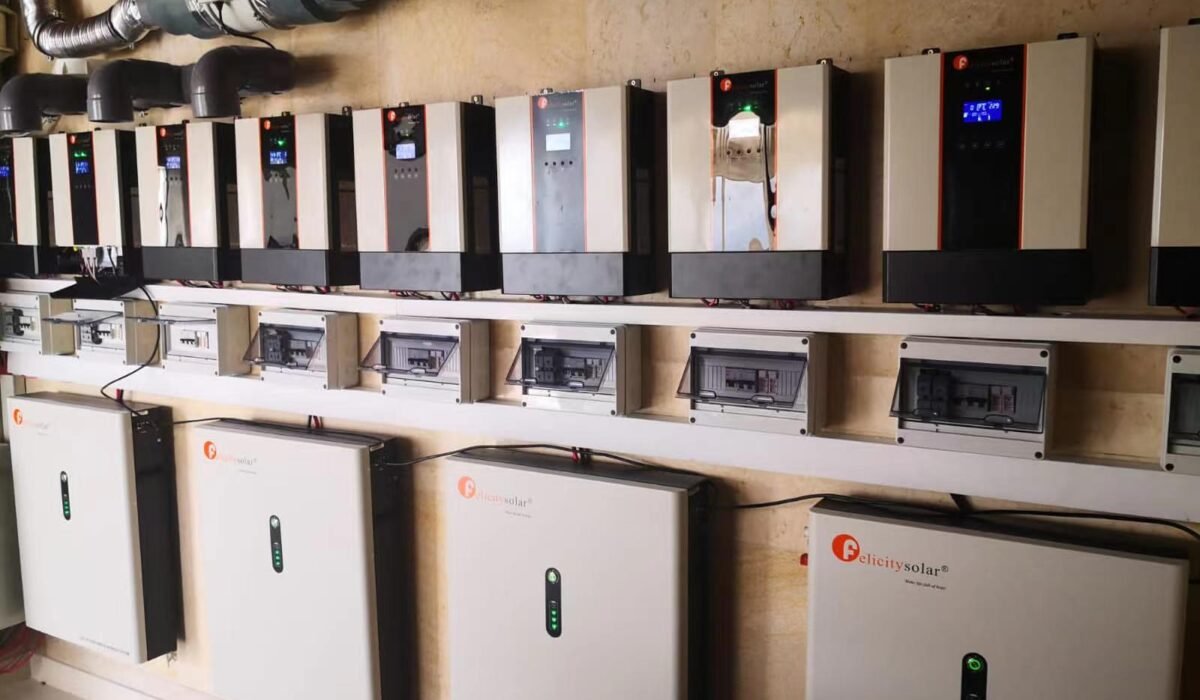The Real Story Behind Solar Battery Discharge.
Understanding Solar Battery Discharge and Peukert’s Law: Why Your Battery Doesn’t Last as Expected.
The Real Story Behind Battery Discharge. Solar batteries are the backbone of any off-grid or backup solar power system. They store the energy generated by your solar panels so you can use it later when the sun isn’t shining. Most people look at the battery’s Ampere-hour (Ah) rating to estimate how long it will last. For example, a 100Ah battery seems to suggest you can run a 100A load for 1 hour or a 10A load for 10 hours.
However, this assumption is only true on paper. In reality, batteries don’t behave in such a simple way. Factors like how fast you discharge the battery, internal resistance, and energy losses can drastically change its actual runtime. This is where Peukert’s Law comes into play — it explains why batteries give you less energy when you use them aggressively.
In this article, we’ll break down this concept in simple, non-technical terms so that you, as a solar user, can understand why your battery sometimes doesn’t meet the expectations written on its label — and what you can do to make it last longer.
1. High Discharge Rates Drain Batteries Faster
When you use high current (e.g., 100A) to power heavy loads such as heaters or large inverters, the battery’s internal resistance increases energy loss as heat. This means:
- The battery doesn’t deliver its full rated capacity.
- You get less usable energy than expected.
- The battery may also heat up, which can shorten its lifespan.
2. Low Discharge Rates Extend Battery Life Slightly
When you use a small current (e.g., 1A) to power low-energy devices like LED lights, the battery discharges more efficiently. This means:
- Internal losses are minimal.
- The battery might last slightly longer than the simple calculation suggests.
Peukert’s Law – The Science Behind It
This behavior is explained by Peukert’s Law, named after the German scientist who discovered it.
- The law says: the faster you drain a battery, the less total energy you get from it.
- This is because batteries have a limit to how quickly they can release energy without losses.
In simple terms, the rated Ah capacity is measured at a specific discharge rate (usually over 20 hours). If you discharge the battery faster than that rate, you won’t get the full capacity.
Practical Example – How It Works
Let’s take a 100Ah battery:
| Load (Amps) | Expected Runtime (Theory) | Actual Runtime (Real Life) |
|---|---|---|
| 1A | 100 hours | 105–110 hours |
| 10A | 10 hours | 9–9.5 hours |
| 50A | 2 hours | 1.5–1.7 hours |
| 100A | 1 hour | 0.6–0.8 hours |
This table shows how actual runtime decreases at high discharge rates.
Why This Matters for Solar Users
For homeowners and businesses using solar systems, this understanding is crucial:
- Correct Battery Sizing
- Avoid underestimating how many batteries you need.
- If you have heavy loads, use larger battery banks or higher-capacity batteries.
- Plan Energy Usage Wisely
- Spread out energy consumption rather than running multiple high-power devices at once.
- Increase Battery Lifespan
- High discharge rates not only reduce runtime but also wear out batteries faster.
- Using the battery gently improves its health and longevity.
How to Get the Most Out of Your Solar Battery
- Use energy-efficient appliances to lower discharge rates.
- Avoid frequently running your battery down with high loads.
- Keep batteries in cool, well-ventilated spaces to minimize heat damage.
- Monitor your system using battery management systems (BMS) for optimal performance.
In simple words:
Your battery’s Ah rating is like a perfect-world promise. In the real world, especially with solar setups, how quickly you use the stored energy makes a big difference.



